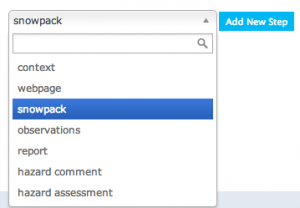| REQUIREMENTS |
| Permission |
Operation administrator and higher |
| Connectivity |
Online and partial offline |
This document describes how to create a new workflow template in the InfoEx system.
Background
A workflow template links together user-specified tasks into a logical order so that users can repeatedly move through the same steps. See Workflow overview for more background information on this feature of the InfoEx application.
Creating a workflow template consists of three main steps:
- Creating a workflow template and choosing its general features
- Adding steps to the workflow template
- Saving the workflow template
Step-by-step description
Creating a workflow template and choosing its general features
| 1.
|
 Fig. 1: Managing a workflow |
| 2.
|
 Fig. 2: Workflow settings |
| 4.
|
Enter a meaningful name for the workflow into the 'Name of Workflow' field.
|
| 5.
|
If you are planning to include any workflow modules that involve data submission (Observations module, Snowpack module, Hazard assessment module, Hazard comment module), you need to associate your workflow to a location. Enter one or multiple locations into the 'Locations for Workflow' field by clicking on it and start typing. The dropdown list will show your location catalog filtered to what matches your typing.
| NOTE |
The location(s) associated with workflow are used in two ways:
- They are the location associated with the data submitted from the Snowpack module, the Hazard assessment module, and the Hazard comment module.
- They determine that previously entered & shared observations are pulled into the workflow in the Observations module. Only previously entered and shared observation that fall under the hierarchy of the specified location(s) are shown within a workflow.
|
| NOTE |
For the majority of users, associating their workflows with their entire operation area (the top parent of your Location hierarchy) will be the best setup. Only operations with multiple, distinct forecast regions (e.g., consulting companies, highway and railway forecasting operations) will find it meaningful to associate workflows with forecast areas or operating zones. |
|
Adding steps to the workflow template
| 1.
|
To add a step to your workflow template, select one of the available modules from the dropdown list under the 'Workflow Steps' section title (Fig. 3). The currently available workflow modules include:
- Modules involving data entry and submission
- Modules for viewing information
| NOTE |
To ensure meaningful workflows, the following restrictions have been placed on the design of workflow templates:
|
|
| 2.
|
Click on Add New Step add a step of the chosen workflow module to your workflow (Fig. 3). This will add
- A new step label under the 'Workflow Steps' section title
- Open the right panel of the screen with the title 'Step Settings'
|
| 3.
|
Specify the module-specific settings for the workflow step. See the documentation on the individual workflow modules for more information on the available settings:
- Modules involving data entry and submission
- Modules for viewing information
|
| 4.
|
 Fig 4: Save step settings |
| 5.
|
Repeat steps 1 to 4 until you have created your entire workflow.
| NOTE |
A Context module is automatically added at the beginning of a workflow that includes any data submitting modules. |
|
| 6.
|
To change the order of steps in your workflow, click on the label of your step under the 'Workflow Steps' section title and drag it up or down to the desired location within your workflow.
|
| 7.
|
You can specify whether the steps in your workflow need to be completed in strict order (i.e., no skipping steps) by checking the checkbox provided as the last item under the 'Workflow Settings' column.
| NOTE |
Once the workflow steps have been completed in order once you can review and edit steps in any order. |
|
Saving the workflow template
| 1.
|
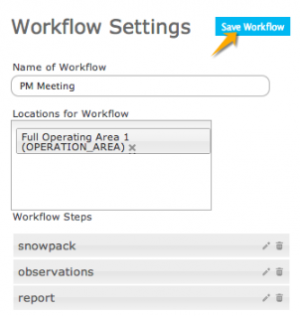 Fig 5: Save workflow steps and settings |
Details of: Types of workflow steps and the information required to set them up
| Context:
|
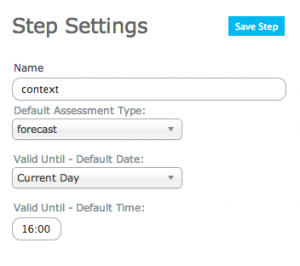 Fig. 2: Workflow 'context' settings - The name of the context step (frequently 'Context for [workflow name]'). This provides a name for this step as the user moves through the workflow.
- The type of workflow. Only two selections are possible: Nowcast (the context refers to conditions at the present moment); Forecast (the context refers to future conditions).
- The date of validity (This is the future date that the workflow is valid until). The default future date is selected by the person who creates the workflow and applies to all workflows of this type.
- The time of vailidity (This is the time of day on the future date that the workflow is valid until.) The default time is selected by the person who creates the workflow.
| NOTE |
All context steps will automatically provide a field to record when the workflow was run and who attended the workflow session. |
| NOTE |
The date and time of validity can be changed when the workflow is run. |
|
| Webpage:
|
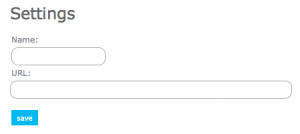 Fig. 3: Workflow 'webpage' settings - A box is provided so you can set the name of the website step. This provides a meaningful name for this step as the user moves through the workflow.
- The url of the website to visit
| NOTE |
Currently you cannot use Google websites. This includes Google Search and YouTube |
|
| Snowpack:
|
A 'snowpack' step allows the workflow user to add a snowpack description in narrative form. The following information is required to set it up:
- A box is provided so you can set the name of the snowpack step.
| NOTE |
A snowpack description is not the same as a snowpack observation. Snowpack descriptions are narrative interpretations of snowpack structure. Snowpack descriptions are not visible in the infoex report until you specify their inclusion. See Specifying the tables to be included in an InfoEx report. |
|
| Observation:
|
 Fig. 4: Workflow 'observation' settings - A box is provided so you can set the name of the observation step.
- A list of 'observation types to include' is provided. Select the desired combination of options for the observation you want to make as part of the workflow.
- Select the 'time constraint on observations to include'. You can submit all unsubmitted observations for the operation, or limit submission to today's observations only.
| NOTE |
You may wish to limit submissions to today's date if there is a possibility that a saved workflow has stale data from a previous day |
|
| Reports:
|
A 'report' step allows you to view a customized infoex report as part of the workflow. The following information is required to set it up.
- A box is provided so you can set the name of the Report step.
- A dropdown list provides the list of predefined reports that you may select for viewing.
| NOTE |
You can select from three generic reports that have been previously defined, or created custom reports. See: [Customizing reports] |
|
| Hazard Comment:
|
A 'hazard comment' step allows you to create and add a comment about avalanche hazard in narrative form to your workflow. The following information is required to set it up:
- A box is provided so you can set the name of the hazard comment step.
|
| Hazard Assessment:
|
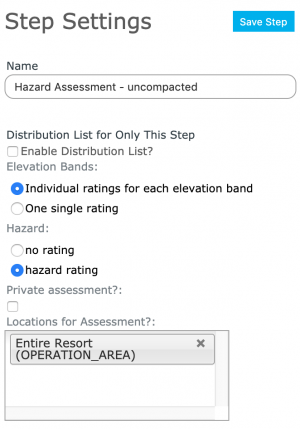 Fig. 5: Workflow 'hazard assessment' settings - A box is provided so you can set the name of the 'hazard assessment' step.
- You may select to assess hazard for one or three elevation bands.
- You may choose to rate stability, hazard, both, or neither.
|
Related documents
Functionality tested by
- Date: Nov. 15, 2013 / John Kelly / QA Server / Version 3.0.0


